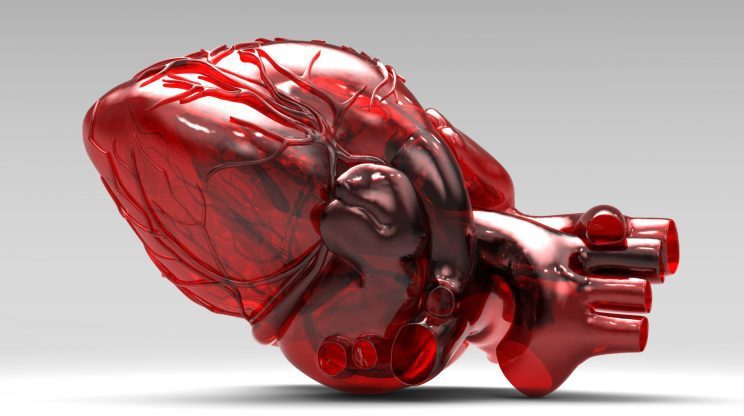Applications / Regenerative Medicine
3D Bioprinting Functional Tissue for Regenerative Medicine
More than ever, researchers are citing CELLINK’s 3D bioprinters in publications on breakthroughs in using 3D bioprinting for regenerative medicine, such as producing replacement organs and tissues on demand.
What is bioprinting for regenerative medicine?
Regenerative medicine seeks to amplify the natural healing process or replace the function of damaged tissue. This burgeoning field of medicine includes everything from stem cell therapies to medical devices and artificial organs to tissue-engineered organs. For the latter, researchers are producing autologous blood vessels, heart valves, musculoskeletal tissue, cartilage, skin and more.
3D bioprinting can alleviate organ donor shortage
Despite awareness campaigns to encourage more people to register as organ donors, more than 100,000 organ failure patients remain on waiting lists. According to the U.S. Department of Health and Human Services, 17 patients a day die waiting for a transplant.
A growing number of researchers are turning to 3D bioprinting as a great promise for sourcing de novo organs. Thanks to recent progress, 3D cell culturing and tissue engineering technology are seen as viable solutions for organ biofabrication and regenerative medicine. From extrusion-based bioprinters like the BIO X to the biodispensing BIO ONE to the light-based BIONOVA X, cutting-edge tissue engineering instruments offer unprecedented accuracy, precision and automation.
Which organs have already been bioprinted?
To achieve functional tissue, challenges include fine-tuning the extracellular matrix (ECM) during bioengineering, determining the optimal cell density, achieving vascularization, heterogeneity, engraftment, chemical signaling and tissue-specific function. Organs or tissues being bioprinted include spinal cord, heart valves, pancreas, glands. Because flat tissue is less challenging to bioprint than a complete organ like the heart, there is a wide gap in progress from organ to organ.

Cornea
When it comes to readiness for clinical use, 3D bioprinted cornea are very close. Scientists from Newcastle University used an INKREDIBLE bioprinter to produce a cornea that showed high viability of corneal keratinocytes. Meanwhile, another team based at Marmara University in Turkey reported bioprinting cornea tissue that supported normal intraocular pressure and other corneal functions. Lastly, researchers at Florida A&M University devised a protocol for the rapid bioprinting of corneal stromal equivalents that exhibited viability up to 2 weeks.
Skin
Scientists are making remarkable progress with 3D bioprinting skin tissue for engraftment in clinical settings. Vascularization has commonly been lacking in conventional skin grafts. But a group of researchers at Rensselaer Polytechnic Institute used the BIO X to 3D bioprint a skin equivalent that once implanted in a mouse showed microvessel formation and perfusion within 4 weeks. At the same time, a team from UCLA bioengineered multilayered, multicellular skin models using the INKREDIBLE.
Bone
A group of Swedish scientists used the INKREDIBLE 3D bioprinter and coaxial printing to bioengineer bone tissue with the bone-specific bioink CELLINK BONE. The authors showed that using coaxial printing attachments produced stable scaffolds that maintained cell viability after bioprinting.
Reproductive organs
One study fabricated 3D scaffolding to culture artificial ovaries that once implanted in a mouse led to the birth of live offspring. Meanwhile, a group of researchers from Huazhong University were able to bioprint an ovarian scaffold of murine cells that supported follicular growth, development and transfer. This favorable outcome is promising for clinical translation to treat reproductive conditions.
Stem cell therapy
Stem cells have driven a paradigm shift in tissue regeneration. These stem cells also represent an unlimited cell source for tissue regeneration and the study of human disease. Some researchers argue that the ability to reprogram human induced pluripotent stem cells will help us understand disease mechanisms and phenotypic variability.
Cartilage
A lab at the University of Alberta used the INKREDIBLE™ and LifeInk® 200 collagen to 3D bioprint human nasal cartilage cells into grafts that remained stable after subcutaneous implantation in a murine model.
Delve deeper
Webinar: Bioprinting Corneal Stroma Equivalents
Company news: TRIANKLE Project
Application note: A 3D Bioprinted Model to Study Osteogenic Differentiation of Primary Mesenchymal Stem Cells
Application note: Biofabricated Airways for COVID Research
Tech note: Fast, High Resolution and Low Phototoxic Confocal Imaging of 3D Bioprinted Liver Constructs
Company news: The First 3D Printed Bionic Pancreas
Webinar: Mending Broken Hearts with “Mini Hearts” and 3D Bioprinters





